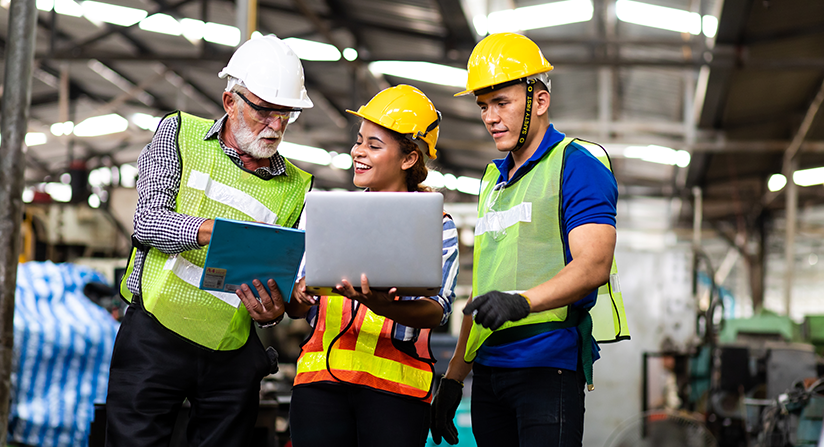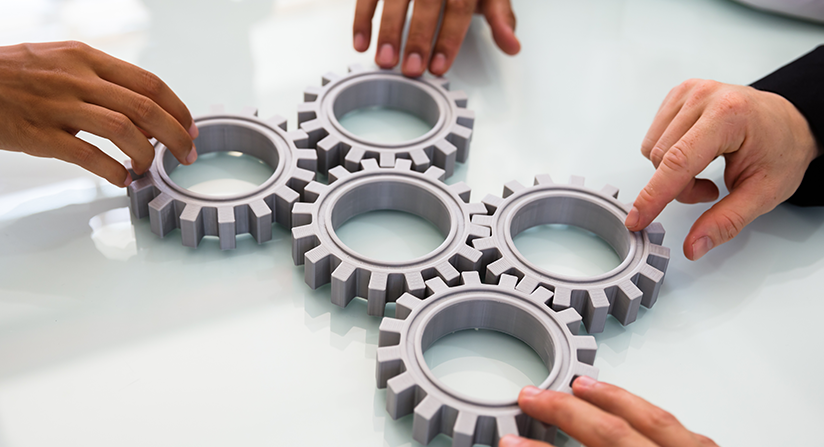2022 has proven to be both positive and disruptive for the manufacturing industry. Despite the pandemic, recession fears, supply challenges, a tight labor market, and economic instability, manufacturing companies continue to survive and evolve in the “new normal.”
In 2022, Industry 4.0 helped transform many manufacturing businesses. Industry 4.0 has enabled manufacturers to embrace advanced technologies for more intelligent automation and increased business connectivity. What is next for the manufacturing industry? Let’s look at the top manufacturing trends for 2023.
Manufacturing Industry Trends to Watch for in 2023
1. IoT (Internet of Things) Will Grow Bigger
Computers were the first devices to connect to the internet, and today, our homes are also filled with connected appliances, smart televisions, alarms, and cameras. In 2023, it is predicted that over 43 billion devices will be connected to the internet. IoT is one of the top trends in the manufacturing industry. It enables enterprises to leverage real-time data and make informed decisions, provide better safety, improve the operational efficiency of manufacturing processes, and reduce costs. A recent study indicated that 31% of production processes leverage smart devices. Another 34% of manufacturers plan to incorporate IoT technology in their operational processes. The COVID pandemic has also led to the increased usage of IoT for remote connectivity.
2. 3D Printing Goes Mainstream
This may sound like an innovation, but it has commonly been used in additive manufacturing for 40 years. 3D printing is considered one of the most transformational technologies in the manufacturing industry. It enables factories to build on-demand products while reducing the cost of making new product prototypes. 3D printing is becoming more popular in the manufacturing industry because it revolutionized the costly and time-consuming tooling process. Factories used to take months to produce spare parts for the mass production of equipment. But with 3D printing, they can be made in a few days.
3. Transition from B2B to B2C
The dynamic behavior of consumers is not only affecting the market, but it is also shifting business models. Considering the changing nature of consumers, most manufacturers are refocusing their approach and transitioning from B2B to B2C. This transition is likely to provide benefits to include higher profit margins, faster time to market, a more comprehensive range of products, better pricing, immediate feedback, and much more. Yes, it requires restructuring and, possibly, replacing an entire business system. But, retaining the conventional B2B model could lead to lost market share.
4. The Era of Predictive Maintenance
Many manufacturing businesses incur heavy losses due to disrupted production schedules and machine downtime. A report by Gartner indicated that the average cost of machine downtime is $5,600/minute. Therefore, manufacturers must ensure that machines and equipment deliver optimal performance. While many manufacturers have already turned to predictive maintenance to reduce downtime, this trend will continue in 2023 and beyond. Predictive maintenance is a proven method to extend the lifetime of machinery, prevent breakdowns, reduce unplanned outages, and avoid other disruptions in the production cycle. It enables manufacturers to monitor the performance of the equipment with the help of specific performance metrics to save valuable time, resources, and money.
5. Going Touchless with Augmented Reality (AR) and Virtual Reality (VR)
AR and VR in manufacturing will reach US$2.8 billion by 2023. Indeed, it is one of the hottest trends in the manufacturing industry because it enriches and supplements the jobs of frontline workers. It is beneficial in providing remote assistance to customers through AR and VR-enabled devices to walk them through basic repairs and troubleshooting. Earlier, customers were reluctant to explore touchless options and preferred to have the technician complete the repair. But after the pandemic, customers are more open to this technology.
While Industry 4.0 leverages cloud-based computing and IoT devices, augmented and virtual reality can offer immersive customer experiences with the help of high-quality information. AR and VR technology can also be used in industrial design and manufacturing. PwC research indicates that using AR and VR in developing products and services can deliver a GDP boost of US$360 billion by 2030. As the value of AR and VR increases, more advancements will occur in the coming year. Manufacturers who haven’t leveraged these technologies should consider doing so to enable faster and smarter production.
6. Next-Gen Manufacturing ERP
Enterprise Resource Planning (ERP) has become necessary among manufacturing companies because of its ability to automate business tasks, streamline operational processes, provide real-time information, and reduce costs. But after the pandemic, manufacturers are moving towards a data-driven approach to ERP. This approach enables manufacturers to leverage their ERP system for faster time to value. Some advanced ERP initiatives include:
1. Cloud ERP
Storing data in the cloud is not new, but more companies are using cloud ERP and moving massive amounts of data into cloud storage. Cloud ERP is easier to manage and reduces costs. It is expected to offer more customization options and grow more in 2023. Learn how cloud ERP is transforming manufacturing businesses.
2. Mobile ERP
In today’s world of the mobile workforce, it is essential to provide employees with real-time anywhere access to customer communications and company information. Today, ERP mobile apps provide users with real-time data and the ability to create an event, send push notifications, review and approve sales orders, and much more.
3. Artificial Intelligence and Automation
Manufacturing businesses generate lots of data, but most manufacturers utilize a small percentage of that data. Integrating AI and ERP automation accelerates data processing and makes it more efficient. Automation and AI-powered digital transformation help manufacturers by eliminating tedious business processes, improving production times, reducing waste, processing large volumes of data, improving quality management, enhancing forecasting, and lowering costs.
7. Post-Pandemic Recovery
The manufacturing landscape has changed due to the global pandemic. Manufacturers have had to learn to adjust to sudden fluctuations in demand, manage costs closely, handle business operations remotely, and much more. Some ways manufacturers can improve post-pandemic are to retire obsolete operating models, return to pre-pandemic production levels, focus on new business lines, and digitalize operations. As manufacturers adapt to the new normal, they must identify key insights, assess their impacts, and determine where to rescale, reinvent, retool, or drawback.
The Road Ahead
The manufacturing industry is poised for growth despite all of the anticipated challenges. In the year ahead, here are a few things manufacturers should consider:
- Increasing digital technology to improve productivity, supply chain visibility, and connectivity with suppliers and consumers
- Mitigate supply chain risks by building a network of local vendors
- Implement smart factory initiatives to optimize machinery and reduce costs
The future of manufacturing looks brighter than ever. Manufacturers must adopt specific changes and leverage the right technologies to survive and thrive . Contact us to discuss your business goals and how these manufacturing trends may benefit your organization.
Follow Us





